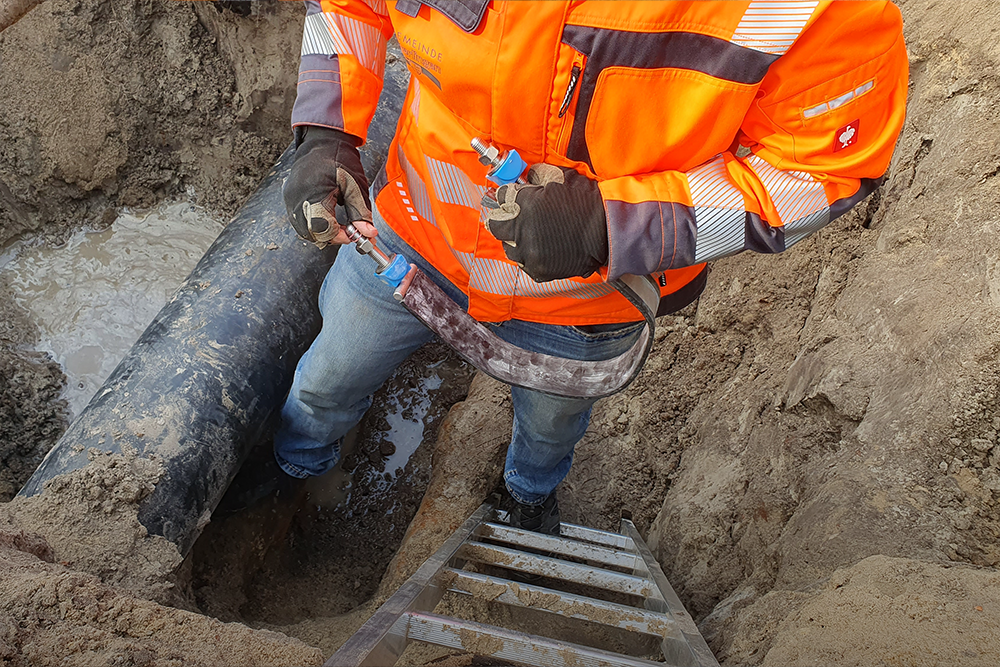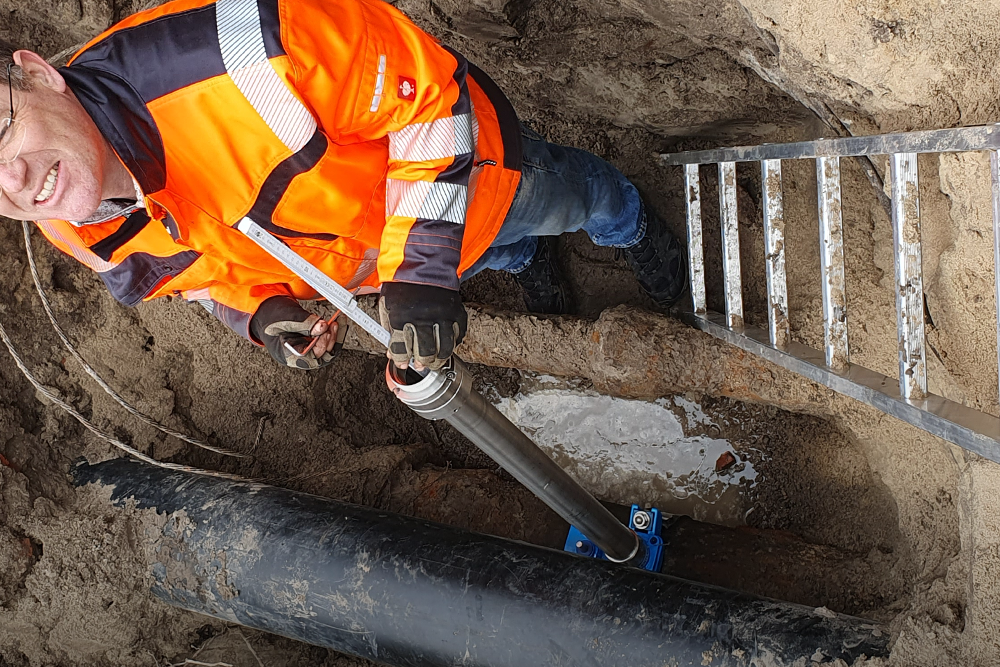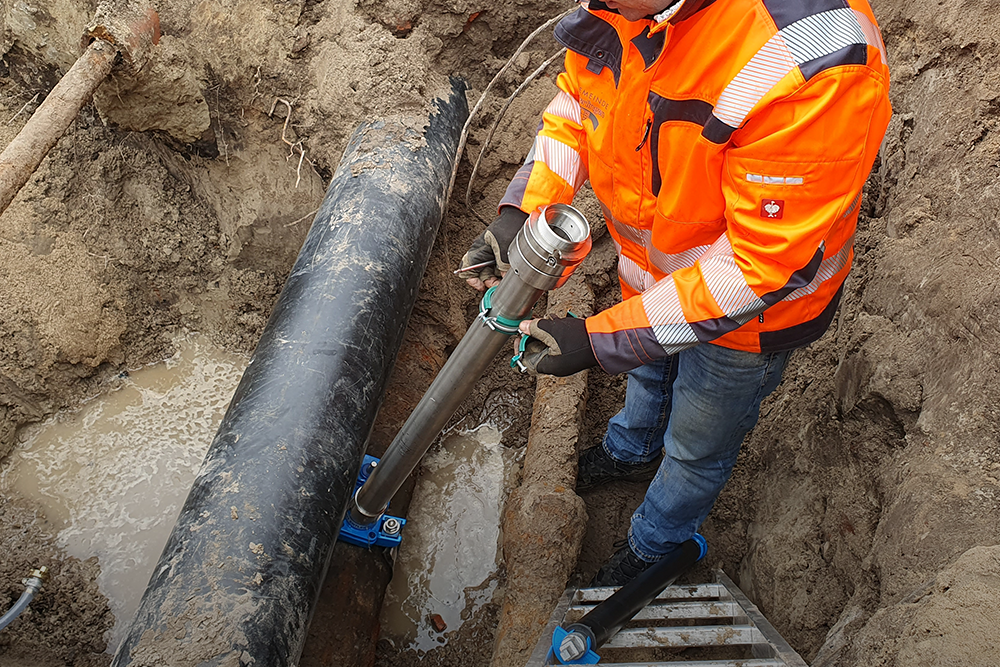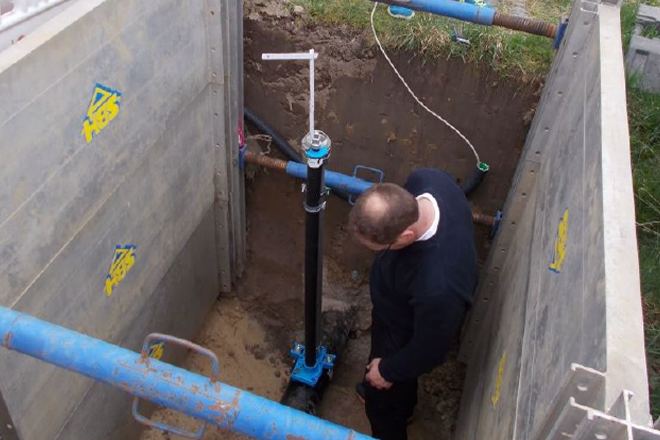Best Practice: Implementation of an IoT-based system for detecting and locating pipe network leaks in Stade
Published: 16. Oct 2024Worldwide, around 126 billion cubic metres of fresh water are lost every day through network losses1, which represents a problem both ecologically and economically. In Europe, the average water loss is about 50 litres per day per person2. Depending on the size, this corresponds to approximately 10 percent of the amount of fresh water fed into the distribution networks3. Especially against the backdrop of sustainability and climate change, there is an urgent need for action here. In order to reduce water losses in the network, the municipal utility of Stade, together with ZENNER and HST Systemtechnik, have implemented a pilot project in which those losses can be detected and qualified with the help of innovative IoT (Internet of Things) technologies.
How was the project carried out?
In Stade, the methodology of so-called leak zone detection is used to prevent water losses in the network. This uses a combination of digital measurement technology and the LoRaWAN® network operated by Stadtwerke Stade. Multifunctional sensors measure flow rate, pressure, noise and temperature, thereby detecting relevant measurement information on the factors caused by water leakage in pipelines. This enables rapid detection and precise location of leaks. LoRaWAN® networks provide wide-ranging coverage while maintaining low energy consumption and high scalability, making them ideal for large-scale water supply systems.
The sensors used precisely record the measured values from underground or difficult-to-access pipes. With LoRaWAN®, the sensors are connected wirelessly and the collected data is transmitted to a central platform at defined intervals and – if necessary – in real time.
Technically, the installation was implemented as follows: In Stade, a water pipe was fitted with tapping clamps after it had been made accessible and installed using a core drill without interrupting the water supply. The “SmartMETER” sensor from HST Systemtechnik was inserted via a measuring lock. Power supply is ensured by a solar panel and a connected back-up battery. The final integration into the LoRaWAN® network and provision of the data could be easily implemented in the IoT platform Element IoT from ZENNER.




What results did the project produce?
The pilot project will be carried out in a predefined area of the Hanseatic city of Stade, where a suspected leak point in the water distribution network will be investigated. The advantages here are the permanent availability of the data and the continuous accessibility of the measuring point through the measuring lock. A particularly efficient option is to work with the measurement installation while the water pipe is in operation. The next goal is to minimize the time it takes to detect a leak and thus reduce water loss.
“The quick and minimally invasive installation as well as the permanent accessibility of the sensors will certainly be viewed very positively by many water network operators. From an economic point of view, the initial investment pays for itself primarily through the long-term reduction in water losses and the lower personnel costs involved in locating leaks. At the same time, operational safety is significantly increased because preventive measures can be taken as soon as a leak is imminent,” explains Dr. Jan-Philipp Exner, Senior Smart City Project Manager at ZENNER. By proactively considering the operating costs of water infrastructure, the municipal utility of Stade aims to sustainably improve the efficiency and reliability of the water supply and make a significant contribution to conserving the resource and protecting the environment.
HST Systemtechnik draws a positive conclusion
HST Systemtechnik is also completely satisfied with the progress of the project so far:

“We are demonstrating the networking of people and systems in Stade in an exemplary manner in our joint project with ZENNER. We have integrated the bulk water meter (SmartMeter) into the existing LoRaWAN® house connection meter network and integrated it into the IntelliNet leak detection software via the Element IoT platform. Working with ZENNER is solution-oriented and uncomplicated. Particularly worthy of mention is the commitment of every Zenner employee, who work together like clockwork with competence and team spirit. We are looking forward to further projects and our joint market presence,”
explains Markus Bayer, Head of the Water Supply Market Segment at HST Systemtechnik GmbH.
There will soon be an opportunity to do this, as an expansion to other testing sites – also in combination with additional measuring sensors – is already planned in Stade.
- R. Liemberger; A. Wyatt (2019): Quantifying the global non-revenue water problem, iwaponline.com/ws/article-abstract/19/3/831/41417/Quantifying-the-global-non-revenue-water-problem ↩︎
- Quantifying the global non-revenue water problem, including Water Supply. 2018;19(3):831-837. doi.org/10.2166/ws.2018.129 ↩︎
- lfu.bayern.de/wasser/merkblattsammlung/teil1_grundwasserwirtschaft/doc/nr_182.pdf ↩︎





